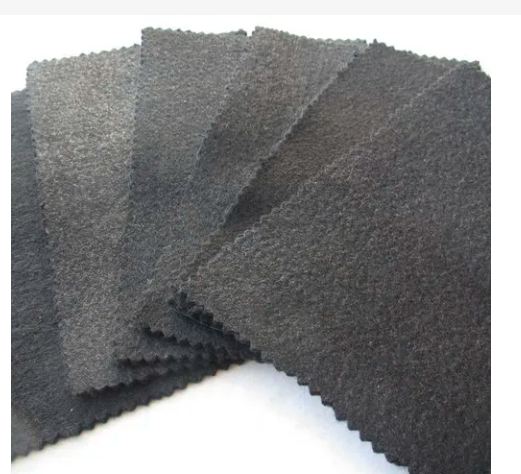- Understanding the Role of Geomembrane Liners in Waste Management
- Innovations in Geomembrane Liners for Water Management
- Geomembrane Liners: A Comprehensive Guide
- The Future of Geomembrane Liners in Civil Engineering
- Geomembrane Liners: Enhancing Landfill Stability
Manager:
WhatsApp:+86 177 0135 2670
Tel:+86 177 0135 2670
Email:marketing@okorder.com
Address:3rd Floor, No.2 Building, No.1 Sanlihe Road
The Marvel of Geotextile Fabric: A Weave of Strength and Sustainability
In the complex carpeting of recent engineering, there is an element that is often ignored, but which is crucial in laying the foundations of our infrastructure - geotextile fabric. It’s not just a strong material but an intelligent one as well designed to work in partnership with the earth and offer answers for difficulties that go hand in hand with building and maintaining roads, railways or even beaches. This fabric speaks volumes about man-made genius and his growing appreciation for nature.

The Versatile Nature of Geotextile Fabric
Geotextiles are permeable textile materials used to enhance soil properties in civil engineering applications. It’s not your everyday cloth; it has been created to be sturdy, tough and interact with the surrounding soil, rock or earth. Once combined with soil, rock or earth it can serve as separator, reinforcement, filter, protector or drainge. This material has been used in road construction for over 30 years now and its application base has only expanded since then.
The diversity of geotextiles equals the variety of projects they are employed on Woven fabrics are stronger than woven coth so they are commonly used when constructing highways Nonwovens are more likely to resemble felt-like products such as mats wherever drainage and filtration comes as questions
The Historical Tapestry of Geotextiles
As an article would reveal, what history carries regarding geotextiles is simply intriguing. They go back to Pharaoh times where excavations have revealed lines and grass mats being used to improve stability on roads. The early type was made from natural fibers obtained from plants together with those taken straight from soils. These materials still exist today though in their more advanced forms indicating that these textiles have stood test-of-time.
The Manufacturing Process: Weaving Strength
Manufacturing processes for geotextile fabric are both an art and a science. It involves the classic or conventional fabric manufacturing process, primarily used for woven and non-woven products. woven geotextiles, for instance, are made by interlacing two sets of orthographically arranged threads or filaments to form a planar structure. This way, the product acquires strong mechanical properties that make it suitable for reinforcement, separation and filtration.
Nonwovens on the other hand are obtained in a two-step procedure involving web formation followed by bonding of fibers through different means such as thermal, spinlaying, chemical or mechanical means. This fabric is less sturdy than woven geotextiles but has good permeability thus mostly used in drainage and filtration applications.
Applications: From Roads to Riverbanks
Wherever they happen to be employed from roads to other environment types so do the applications of geotextile material differ. Their suitability would improve soil conditions in civil engineering projects making it more manageable while constructing. Others have been applied in landfills or harbors among others where they act as a permeable barrier facilitating drainage and preventing erosion.
Geotechnical applications use these fabrics for filtration, drainage, separation of soil layers within these embankments; reinforcement and stabilization etc., which can be seen in road & rail embankments; earth dikes; coastal protection structures and even fences preventing sediment from being washed down stream at harbor works/breakwaters for example
Environmentally Friendly Geotextile Fabric: The Fabric of Sustainability
Geotextile fabric is mainly set apart by its environmental impact. Unlike many typical building materials, geotextiles are designed with sustainability and the environment in mind. It is produced using recyclable or biodegradable materials which reduce the carbon print left behind by construction activities.
Furthermore, geotextile fabric promotes vegetative growth and prevents soil erosion, therefore helping to conserve natural landscapes. It’s a fabric that builds as well as nurtures an environment; this finely imbalanced situation must be maintained for the sake of sustainable development.
The Future of Geotextile Fabric: Weaving a Greener Tomorrow
As we peer into the future, there are no bounds for what geotextile can do. New varieties of even stronger and more durable types of geotextiles are being discovered thanks to ongoing research and development initiatives towards more environmentally friendly products. This has led to a growing trend towards using plant based fibers in the production process resulting to less environmental burden on these fabrics.
Due to rising awareness about their benefits and strong infrastructural development in developing countries, global market for geotextiles will continue expanding. This is not only a market for profits but for solutions in tune with our planet.
Conclusion: The Fabric That Holds Us Together
In the grand scheme of things, geo-textile fabric may seem like a single threaded line amidst the tapestry making up our world. But this thread is very much woven into our infrastructure’s core so as to provide us with strength, stability as well as sustainability. Not only do we use this material in constructions but also it serves as an instrument through which we can build a better green future for ourselves collectively.
It is fascinating how Egyptian roads were made from geo-textile fabric when one considers what possibilities lie ahead on this course. Over time, this heritage has been handed down as evidence of the inexhaustible usefulness and flexibility of geo-textile fabric. It is not only a part of our history, but also plays one of the most significant roles in modernity and future.
- Previous:The Diverse World of Geotextile Fabric: A Sojourn through Innovations and Sustainable Development
- Next:NPA Geocells - The Wonders of Engineers’ Future






